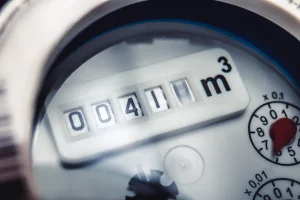The government’s net zero hydrogen push is at risk from water shortages – how can businesses help?
As part of its commitment to achieving net zero for the UK by 2050, the UK government produced its hydrogen strategy in 2021. The aim of the strategy was to reach 10GW of low carbon hydrogen production by 2030 to help decarbonise British electricity. However, in March this year, the UK’s Climate Change Committee (CCC) warned the government was “asleep at the wheel” when it comes to clean energy, stating that “a rapid overhaul of the planning system and regulations” is needed.
Not all hydrogen is green
Hydrogen can be produced in three main ways, and while all types of hydrogen fuels are greener than fossil fuels, only one produces zero carbon electricity, ‘green hydrogen’. Green hydrogen is produced by passing an electric current through water which splits molecules into hydrogen and oxygen. The other ways of making hydrogen are ‘blue hydrogen’ which splits carbon and hydrogen in methane gas, reducing the amount of carbon dioxide produced from fossil fuels by 60-85%. The third method is ‘biomass gasification’ which uses oxygen, heat and steam to convert organic waste into hydrogen.

The problem with green hydrogen
The main issue with the production of green hydrogen, as the CCC report points out, is that “Hydrogen production can require significant water use – if hydrogen production is located in regions projected to be at risk of water stress in future (typically the south and east of England), water availability may also be a constraint on how much hydrogen can be produced, particularly at times of drought.”
This irony of the fact that this way of producing net zero energy needs to use a resource that’s getting scarcer because of climate change is not lost on the report’s authors who call it a “significant concern”. They recommend we plan ahead to come up with ways of dealing with the climate change hazards, suggesting solutions such as cross-sector regional planning for water usage, as well as the development of fuel cells that will capture the water used in the green hydrogen process, allowing it to be captured rather than released into the atmosphere as vapour.
Saving water is more vital than ever
We are therefore presented with an additional reason to take steps to save water now in order to serve the needs of a growing population and large scale energy production. The more action we take now, the better we will be able to deal with more frequent water shortages and droughts in the future. If every business takes steps to become more water efficient, the greater the chances are that there will be enough water for everyone.

How to implement water efficiency measures
The good news is that water efficiency doesn’t necessarily mean a noticeable change in water use for your business and employees. Check out our free Water Efficiency Guide and our Behavioural Change Guide for tips on what you can do to improve water efficiency and get your staff on board with the changes.
It may seem strange that a water retailer is actively encouraging its customers to use less water, but the stakes are high and if we don’t do anything now, we’ll all face a very difficult future.



